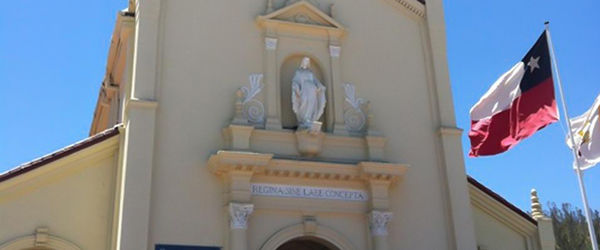On Sept. 3, Angelenos are invited to put on their walking shoes and participate in two walking events that commemorate the 230th birthday of the City of the Angels. Both are drawn from history, with one walking event have taken place for 30 years, while the other makes its inaugural run that Saturday.Dedicated to Mary as patroness of Los Angeles, the Grand Marian Procession revives an old tradition in the city that was discontinued about 100 years ago. Sponsored by the newly-formed Queen of Angels Foundation, the procession is slated to begin at 3 p.m. at Queen of Angels Church on Main Street (La Placita) with a blessing before participants walk through the streets of Los Angeles heading toward the Cathedral of Our Lady of the Angels. Numerous Catholic lay organizations — including the Knights of Columbus, the Knights of Peter Claver, the Order of Malta and more — will be joined by civic groups as well as the general public in this grand walk through downtown. A processional crucifix, a 5 ¬Ω foot tall statue of Mary in a processional carriage decorated with flowers, festive banners, flags, singers, color guards, bagpipers and more will set a joyous yet respectful tone to the event.Once at the Cathedral, participants will join in a rosary before going inside for a votive Mass on Mary’s feast day.Organizing such a large scale logistical experience has taken time and patience, but for Mark Anchor Albert, Cathedral Associate who is overseeing the procession, it’s an event that is long overdue. “It’s been a decade of thought and a year of planning,” says Albert who adds that he was inspired by the Old World European custom of holding such processions on feast days of saints named for cities. “On this day, we celebrate the founding of our city which was named for Mary, Queen of the Angels, and we ask for her protection and guidance for our city and county which bears Our Lady’s name.”Hoping that this event will become an annual tradition, Albert sees this procession as a rally that will draw participation from every race, economic level and ages. “Not everyone in the procession may be Catholic,” says Albert, “but we are all united in our prayer for protection and guidance for our city, El Pueblo de Nuestra Senora de Los Angeles.”Joining in the Marian procession will be members of Los Pobladores (the townspeople), descendants of the founders of El Pueblo in 1781. Earlier that day, these relatives of the first Angelenos — as well as other willing walkers — will have trekked nine miles from Mission San Gabriel to El Pueblo Historical Monument, recreating that historic walk that brought settlers, accompanied by soldiers, to create a new home near the banks of the Los Angeles River.All are welcomed to join the walk, which starts at 6 a.m. at the Mission which usually brings participants to Olvera Street about 9:30 a.m. Registration is required.Pobladores descendants often wear early California outfits for the early morning walk, and the annual event brings together extended family members from many corners of the area.“We walk and no one rushes us as we take our time,” says Paul Guzman, member of the group who is also a docent at El Pueblo. “We have had people who think it’s a marathon or race, but it’s not. It’s a leisurely walk through San Gabriel, Alhambra, El Serreno, Lincoln Park and then downtown.”Unlike previous years, this year’s walk will not have the benefit of street closures or police escort because of budget cuts. That won’t stop the walkers. “We will just mind the street signs and go with the flow of traffic,” says Guzman who adds that there will be cars in front of the walkers in case of an emergency and “to cheer them on.”The annual walk has welcomed as many 900 people one year. Given that this year’s is the 30th edition, Guzman anticipates a large group of participants.One of the most striking historical facts about the early settlers says Guzman, is that they were multicultural, foreshadowing the diverse mixture of people that eventually would call Los Angeles home. “Mulattos, African-Americans, Spaniards — it was quite a mix back then,” he says.One of his favorite stories about the walk is the romance that blossomed between a soldier and a settler, a widow with two children. “By the time they reached the new town, they had decided to get married, so she was taken off the pobladore list and put on the military list.”Weddings, baptisms, confirmations were all a part of life in early Los Angeles. “Their Catholic faith was a part of their lives and when babies were born, they became each other’s godparents,” says Guzman. “They kept their faith and that’s why they survived.”No doubt it will be a long day for Guzman and his fellow pobladores who will start their day at 6 a.m. for the walk followed by lunch at Olvera Street and then joining the afternoon Marian Procession. “We are really looking forward to being a part of that new tradition,” he says. “When I am showing people around El Pueblo, I tell them that the city was named for Mary, Queen of the Angels and they are surprised. They think the city is named for angels. No, this city was dedicated in honor of Mary; she is the patroness of Los Angeles.”For more information on the Grand Marian Procession, visit: www.queenoftheangels.com or call (213) 687-1515.For more information on attending the Los Pobladores Walk to Los Angeles, call the City of San Gabriel Parks and Recreation at (626) 308-2875. For information on Los Pobladores, visit www.lospobladores.org. {gallery width=100 height=100}gallery/2011/0902/sgprocession/{/gallery}

